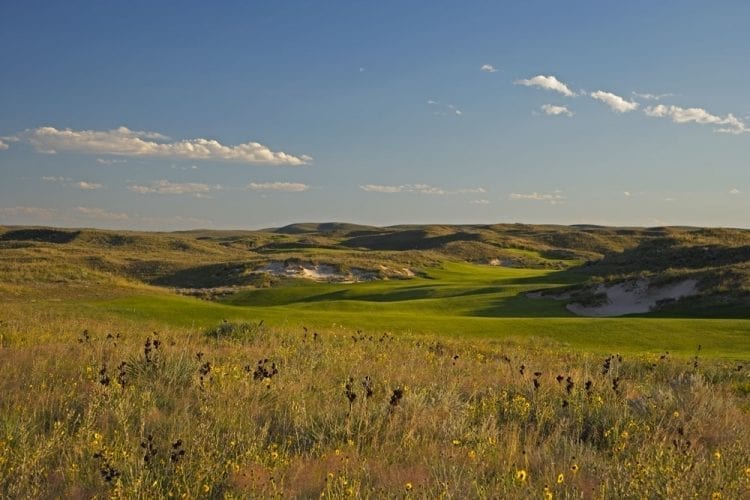
Back in 1979, Jim O’Neal and his older brother Rupert were mending fences on grazing land for the family’s cattle. Only 12 at the time, Jim was the family golfer, playing the Holyoke municipal course at every opportunity. Looking out across the unusual sand dunes known as chop hills, Jim proclaimed, “Rupert, you could make a great golf course out here.”
Jim left the farm, pursued a career in golf and is now head pro at the Meadow Club, just north of San Francisco. After college, Rupert returned to run the family business. An avid outdoorsman, he established a bird-hunting club just south of town. In 2001 the thought entered Rupert’s mind that a golf course might augment the hunt club and decided upon a 700-acre tract in the same series of dunes upon which Jim originally had envisioned 18 holes.
Aware of the glowing reviews for Pacific Dunes, Jim invited Tom Doak to survey this remote patch of northeast Colorado. Over two years, Doak visited the chop hills six times before determining the routing.
When the course was completed, the O’Neals determined the name that pays homage to their Irish roots. While Rupert runs the day-to-day operations for the club, Jim is the director of golf and remains the visionary.
Ballyneal is a rare commodity in American golf: a windblown course, reminiscent of the great Irish links, with fast, firm turf and native sand hazards. Shots that stray from the generous fairways are almost always found, but the player must exercise prudence when executing recovery shots. This combination suggests shots of different trajectories and shapes.
The large greens are wild—severely sloped with a mixture of big rolls, smaller ridges, backstops and bold shapes—with the fescue surfaces maintained at sensible speeds.
The par 4s on the 7,147-yard layout measure either less than 385 yards or more than 460 yards, and all three par 5s are reachable in two shots. The 515-yard 8th is slightly uphill, with a large bunker guarding the right side of the fairway. A key shot is the second at the 546-yard 16th, where the options are playing short of large dunes, through a “pass” or over them. Decision-making here, especially with a match in doubt, is exhilarating.
So are the conditions, which change day to day with the shifting wind. Holes requiring a short iron one day might demand a hybrid the next.
Aesthetically, Ballyneal has few peers. The rough-edged bunkers, fairways and greens meld into the rolling terrain. The critic compelled to find fault might notice that none of the short par 4s turns right, or that fairway shaping on a few holes is too “perfect”—good tee shots result in agreeable lies more often than randomly expected.
For all its slight faults, Doak has put together a lovely progression of 18 good to great holes, providing a challenging, fun test for all levels of golfers. As its renown grows, Ballyneal should stand with Pacific Dunes as one of Doak’s finest American efforts.
The layout has exceeded Jim’s childhood dreams. No doubt, those fortunate enough to visit Ballyneal come away feeling similarly satisfied.






